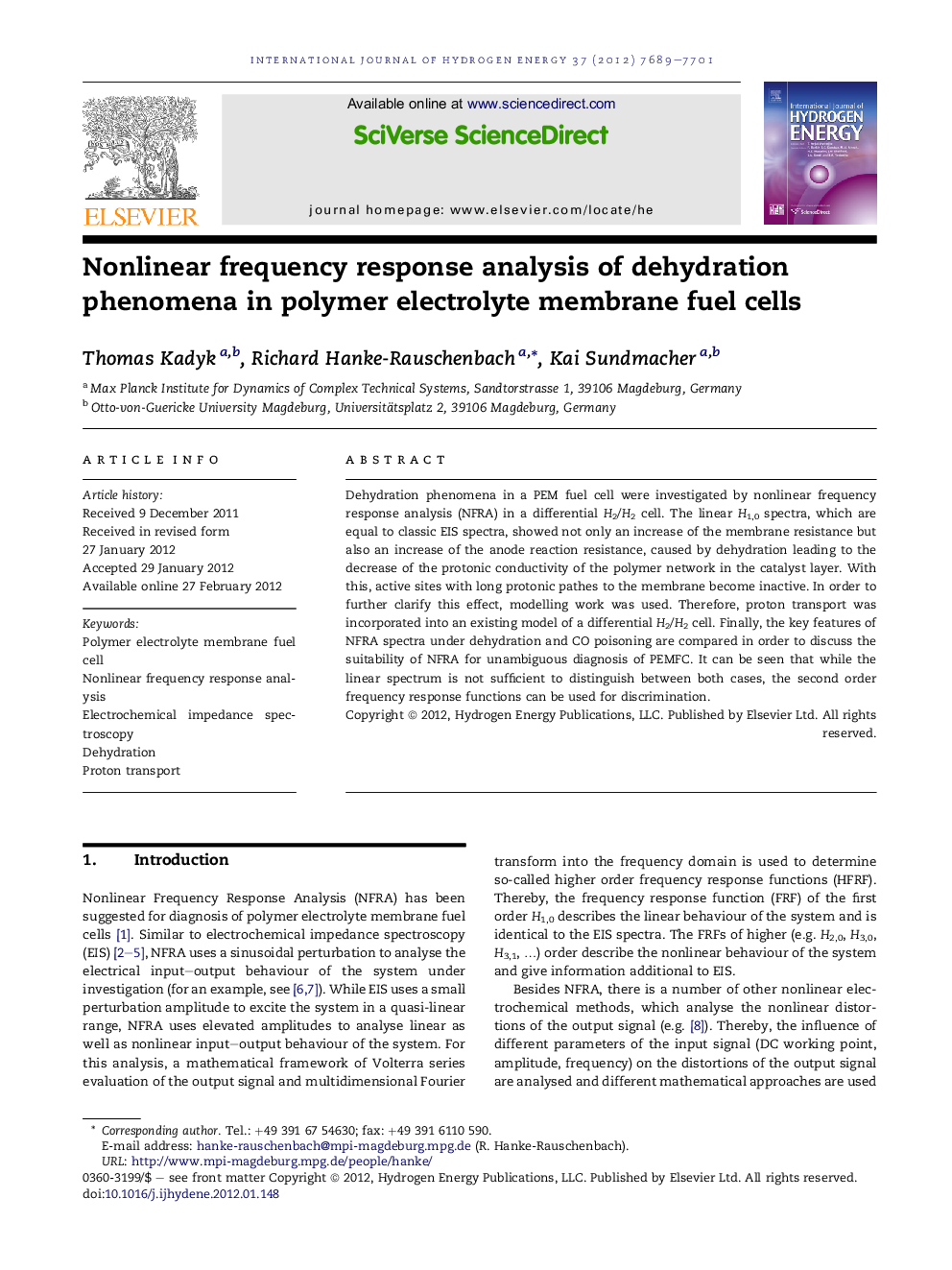| Article ID | Journal | Published Year | Pages | File Type |
|---|---|---|---|---|
| 1278572 | International Journal of Hydrogen Energy | 2012 | 13 Pages |
Dehydration phenomena in a PEM fuel cell were investigated by nonlinear frequency response analysis (NFRA) in a differential H2/H2 cell. The linear H1,0 spectra, which are equal to classic EIS spectra, showed not only an increase of the membrane resistance but also an increase of the anode reaction resistance, caused by dehydration leading to the decrease of the protonic conductivity of the polymer network in the catalyst layer. With this, active sites with long protonic pathes to the membrane become inactive. In order to further clarify this effect, modelling work was used. Therefore, proton transport was incorporated into an existing model of a differential H2/H2 cell. Finally, the key features of NFRA spectra under dehydration and CO poisoning are compared in order to discuss the suitability of NFRA for unambiguous diagnosis of PEMFC. It can be seen that while the linear spectrum is not sufficient to distinguish between both cases, the second order frequency response functions can be used for discrimination.
► Nonlinear frequency response analysis of dehydration phenomena in PEM fuel cells. ► Protonic conductivity decrease in catalyst layer inactivates catalyst sites. ► Model including proton transport and simulated nonlinear spectra. ► Fingerprint of spectra under dehydration and CO poisoning useful for diagnosis.
